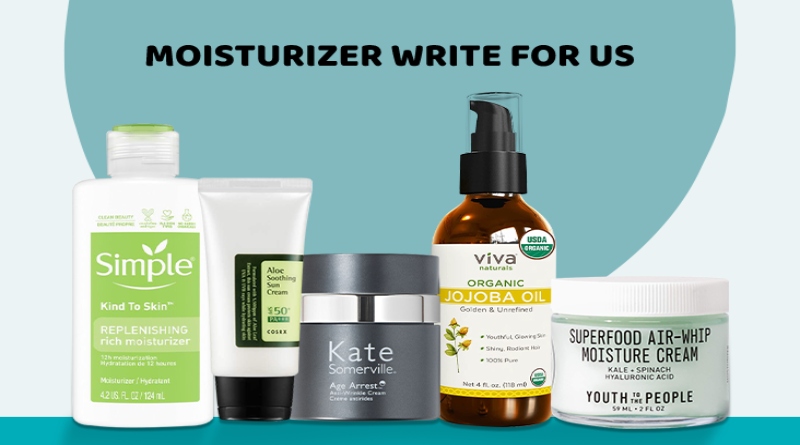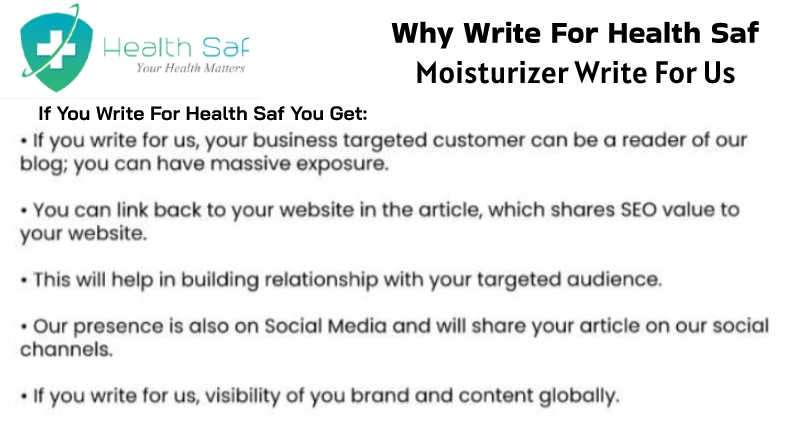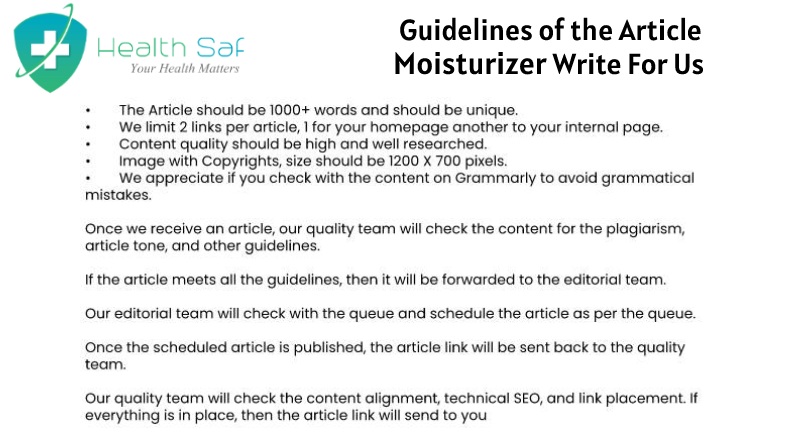Moisturizer Write For Us

A moisturizer, also known as an emollient, is a cosmetic product that protects, moisturizes, and lubricates the skin. Sebum, generated by healthy skin, generally performs these duties. “emollient” comes from mollie, which means “to soften.”
Water regularly evaporates from the deeper layers of the skin of the human body due to a phenomenon known as trans epidermal water loss. Human skin naturally maintains a dry, quickly shed surface as a barrier against viruses, debris, or harm by managing its water content while also keeping itself from drying out and becoming brittle and inflexible. The lipid bilayer between the corneocytes determines the capacity to retain moisture.
Moisturizers are classified as either occlusives or humectants, and their active components fall into one of two groups. Occlusives establish a layer on the skin’s surface that prevents moisture from leaving. The higher the impact, the more occlusive the formulation. Ointments are thicker than aqueous creams, which are more comprehensive than lotions. 4–8 g/(m2h) of water is generally lost via the skin. A coating of petrolatum applied to normal skin can lower that loss by 50–75 percent for many hours—natural oils similarly generated by the human bodywork to moisturize the skin.
Humectants are substances that absorb water. When the humidity is more than 70%, they can drink this water from the air and moisturize the skin, but they typically pull water from the dermis into the epidermis, making the skin drier. In 2001, research published in the journal Skin Research and Technology revealed no relationship between humectants and moisturizing effects. They are nearly often employed in conjunction with occlusives in practical applications.
Water is commonly used in moisturizers. It serves as a temporary hydration agent and a conduit for the absorption of certain ingredients and the evaporation of the moisturizer.
Consistent moisturization of the skin from water exposure can cause an allergic response or irritating contact dermatitis and foreign object penetration.
How to Submit Your Articles?
To write for us, you can email us at contact@healthsaf.com
Why Write for Health Saf- Moisturizer Write For Us

Guidelines of the Article – Moisturizer Write For Us

You can send your article to contact@healthsaf.com
Also Read: What is the use of Monatomic Gold?
